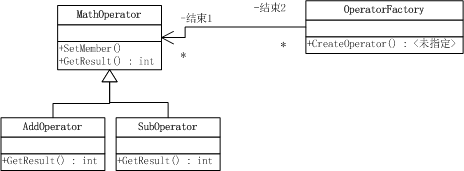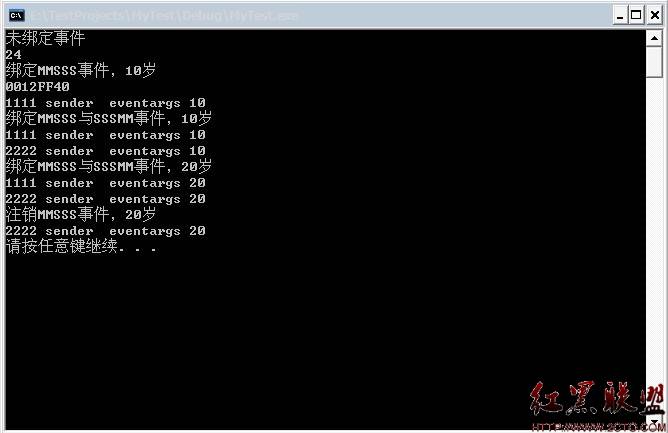libsndfile 用法简介
最近要做些声学信号检测方面的工作。需要对一些 wav 格式的文件进行分析处理。google 了一番,发现了 libsndfile。libsndfile 是一个 C 语言写成的 开放源代码的音频文件读写的库。可以读写 WAV 格式,FLAC 格式和其他许多常见格式(因为专利原因不支持MP3)。LGPL 协议。
libsndfile 的用法很简单。
[cpp]
SNDFILE* sf_open(const char *path, int mode, SF_INFO *sfinfo);
SNDFILE* sf_open(const char *path, int mode, SF_INFO *sfinfo);用来打开一个音频文件。 mode 有三个选项。
SFM_READ - read only mode
SFM_WRITE - write only mode
SFM_RDWR - read/write mode
音频文件的一些基本信息由 sfinfo 来返回。
[cpp]
typedef struct
{ sf_count_t frames ; /* Used to be called samples. */
int samplerate ;
int channels ;
int format ;
int sections ;
int seekable ;
} SF_INFO ;
typedef struct
{ sf_count_t frames ; /* Used to be called samples. */
int samplerate ;
int channels ;
int format ;
int sections ;
int seekable ;
} SF_INFO ;需要注意的是,如果是SFM_READ 模式打开一个文件, sfinfo 的 format 字段应预先写为 0 。
打开音频文件后,测试 format 的各个字段就能知道音频文件的基本类型。
[cpp]
sf_count_t sf_seek(SNDFILE *sndfile, sf_count_t frames, int whence);
sf_count_t sf_seek(SNDFILE *sndfile, sf_count_t frames, int whence);用来在音频文件的数据区中移动文件指针,有点像 lseek 函数。不过sf_seek 函数自动的屏蔽了非数据区的部分。所有的移动都是在数据区中进行了,而且是以数据帧为单位,相当的方便。
[cpp]
sf_count_t sf_read_short (SNDFILE *sndfile, short *ptr, sf_count_t items) ;
sf_count_t sf_read_int (SNDFILE *sndfile, int *ptr, sf_count_t items) ;
sf_count_t sf_read_float (SNDFILE *sndfile, float *ptr, sf_count_t items) ;
sf_count_t sf_read_double (SNDFILE *sndfile, double *ptr, sf_count_t items) ;
sf_count_t sf_readf_short (SNDFILE *sndfile, short *ptr, sf_count_t frames) ;
sf_count_t sf_readf_int (SNDFILE *sndfile, int *ptr, sf_count_t frames) ;
sf_count_t sf_readf_float (SNDFILE *sndfile, float *ptr, sf_count_t frames) ;
sf_count_t sf_readf_double (SNDFILE *sndfile, double *ptr, sf_count_t frames) ;
sf_count_t sf_read_short (SNDFILE *sndfile, short *ptr, sf_count_t items) ;
sf_count_t sf_read_int (SNDFILE *sndfile, int *ptr, sf_count_t items) ;
sf_count_t sf_read_float (SNDFILE *sndfile, float *ptr, sf_count_t items) ;
sf_count_t sf_read_double (SNDFILE *sndfile, double *ptr, sf_count_t items) ;
sf_count_t sf_readf_short (SNDFILE *sndfile, short *ptr, sf_count_t frames) ;
sf_count_t sf_readf_int (SNDFILE *sndfile, int *ptr, sf_count_t frames) ;
sf_count_t sf_readf_float (SNDFILE *sndfile, float *ptr, sf_count_t frames) ;
sf_count_t sf_readf_double (SNDFILE *sndfile, double *ptr, sf_count_t frames) ;
上面 8 个函数用来从音频文件中读取数据。 这里来说一说 items 和 frames 的区别。
对于单声道的音频文件。 item 和 frame 是一样的。 一个 item 对应一个数据点。
对于多声道音频文件,一个 frame 包含多个数据点,比如双声道音频文件,一个 frame 包括 2 个 item。
另外,音频文件中可能用 8 bits 来存储一个数据点,也可能是 16bits,可能用整数也可能用浮点数来存储音频数据。sf_read_XXX 系列函数会替你完成数据的转换工作。
下面是一个简单的例子,读取一个音频文件,显示其基本信息,并将数据存储到文本文件中。 这里假设音频文件为单声道。
[cpp]
#include <stdio.h>
#include <stdlib.h>
#include <sndfile.h>
void save(short *b1, double *b2, int n);
int main(int argc, char * argv[])
{
SF_INFO sf_info;
SNDFILE *snd_file;
short *buf1;
double *buf2;
if(argc != 2)
{
exit(1);
}
sf_info.format = 0;
snd_file = sf_open(argv[1], SFM_READ, &sf_info) ;
printf ("Using %s.\n", sf_version_string ()) ;
printf("File Name : %s\n", argv[1]);
printf("Sample Rate : %d\n", sf_info.samplerate);
printf("Channels : %d\n", sf_info.channels);
printf("Sections : %d\n", sf_info.sections );
printf("Frames : %d\n", (int)sf_info.frames );
buf1 = (short *)malloc(sf_info.frames *sizeof(short));
buf2 = (double *)malloc(sf_info.frames *sizeof(double));
sf_readf_short(snd_file, buf1, sf_info.frames) ;
sf_seek (snd_file, 0, SEEK_SET) ;
sf_readf_double(snd_file, buf2, sf_info.frames) ;
save(buf1, buf2, sf_info.frames);
free(buf1);
free(buf2);
sf_close(snd_file);
return 0;
}
void save(short *b1, double *b2, int n)
{
int i;
FILE *fp1;
FILE *fp2;
fp1 = fopen("short.dat", "w");
fp2 = fopen("double.dat", "w");
for(i = 0; i< n; i++)
{
fprintf(fp1, "%d\n", (int)b1[i]);
fprintf(fp2, "%f\n", b2[i]);
}
fclose(fp1);
fclose(fp2);
}
#include <stdio.h>
#include <stdlib.h>
#include <sndfile.h>
void save(short *b1, double *b2, int n);
int main(int argc, char * argv[])
{
SF_INFO sf_info;
SNDFILE *snd_file;
short *buf1;
double *buf2;
if(argc != 2)
{
&nb
补充:软件开发 , C++ ,




